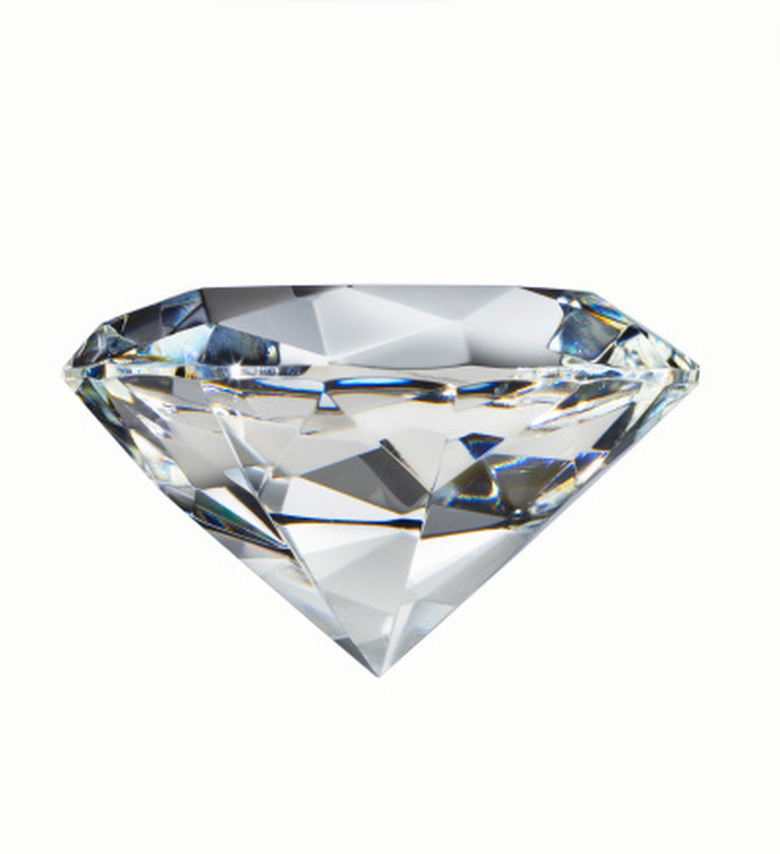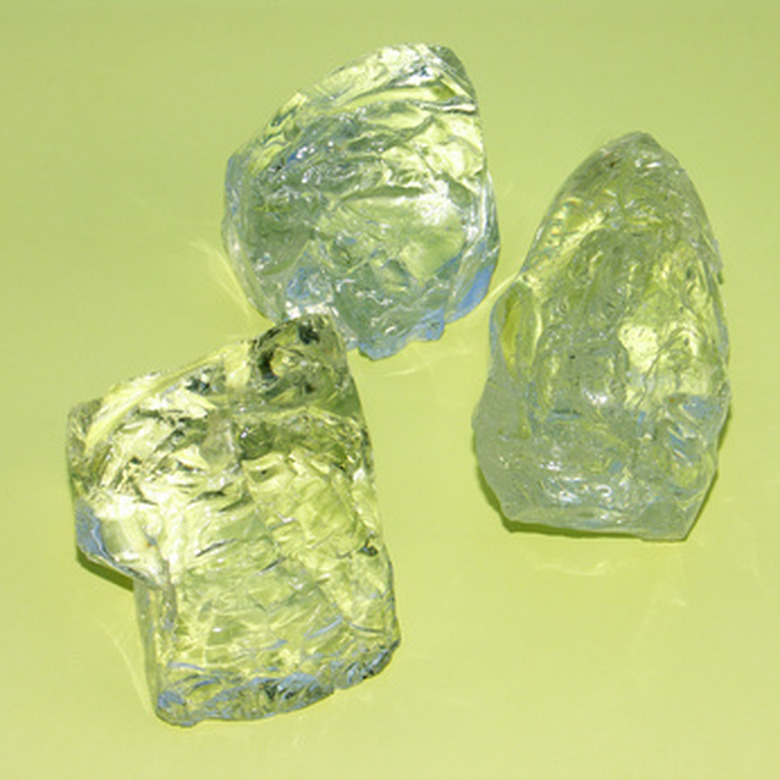How To Test Glass Hardness
Material hardness is commonly understood as resistance to scratching or abrasion. However, different tests are used to measure different aspects of material hardness in accordance with the mechanical properties under investigation. Moreover, tests are conducted under varying experimental conditions and data analysis methods. Consequently, no direct relationship exists between the results of different hardness tests. The most common is "Mohs Test" which measures "scratch hardness" on a comparative scale of 10 reference minerals. The principle is simple: material A will scratch material B only if A is harder than B. Common objects of known hardness can be used to perform Mohs test.
Step 1
Press firmly into, and across the surface of the glass with a fingernail. Not surprisingly, you find that it cannot be scratched by a fingernail. This means on Mohs scale, glass is harder than 2.5.
Step 2
Continue the test using the penny for scratching. Note that the penny fails to scratch the glass. You then conclude that glass has a Mohs hardness greater than 3.
Step 3
Refer to the tips section for a list of Mohs test reference minerals in order of hardness, followed by the hardness of the common objects you will use next.
Step 4
Test the materials against themselves. Note that a given material will scratch only materials of lower hardness.
Step 5
Continue the tests using the nail for scratching, then the apatite, and so on, in increasing order of hardness until you have fixed the glass between two reference materials.
Note that neither the nail nor the apatite scratches the glass, but orthoclase does. You can then conclude that glass has a Mohs hardness between 5 and 6.
Things Needed
- Healthy fingernail
- Penny with sharp edge
- Iron nail
- Sharp piece of glass
- Piece of apatite (a phosphate mineral)
- Piece of orthoclase (feldspar)
- Steel file
- Piece of quartz
TL;DR (Too Long; Didn't Read)
Mohs test reference minerals: 1. Talc, 2. Gypsum, 3. Calcite, 4. Fluorite (fluorspar), 5. Apatite, 6. Orthoclase, 7. Quartz, 8. Topaz, 9. Corundum (ruby, sapphire), 10. Diamond. Common reference objects: fingernail 2.5 ,copper penny 3, iron nail 4.5, glass 5.5, steel file 6.5.
Investigators often use a Mohs test kit, a set of the 10 minerals that constitute Mohs scale. Often the harder specimens are fixed on the tips of metal rods which are used as instruments for scratch testing. Materials that have the same hardness can scratch each other, but only with difficulty. Apatite, feldspar and quartz can be obtained from mineral dealers or supply stores, or over the internet. Mohs test is both non-continuous and non-linear. For example: diamond (10) is about 140 times harder than corundum (9), while flourite (4) is only slightly harder than calcite (3). You can perform Mohs test to determine the scratch harness of any material. Notwithstanding its limitations, Mohs test is still used by scientists for comparative hardness measurements.
References
Cite This Article
MLA
Merry, Michael. "How To Test Glass Hardness" sciencing.com, https://www.sciencing.com/test-glass-hardness-7468483/. 24 April 2017.
APA
Merry, Michael. (2017, April 24). How To Test Glass Hardness. sciencing.com. Retrieved from https://www.sciencing.com/test-glass-hardness-7468483/
Chicago
Merry, Michael. How To Test Glass Hardness last modified March 24, 2022. https://www.sciencing.com/test-glass-hardness-7468483/

